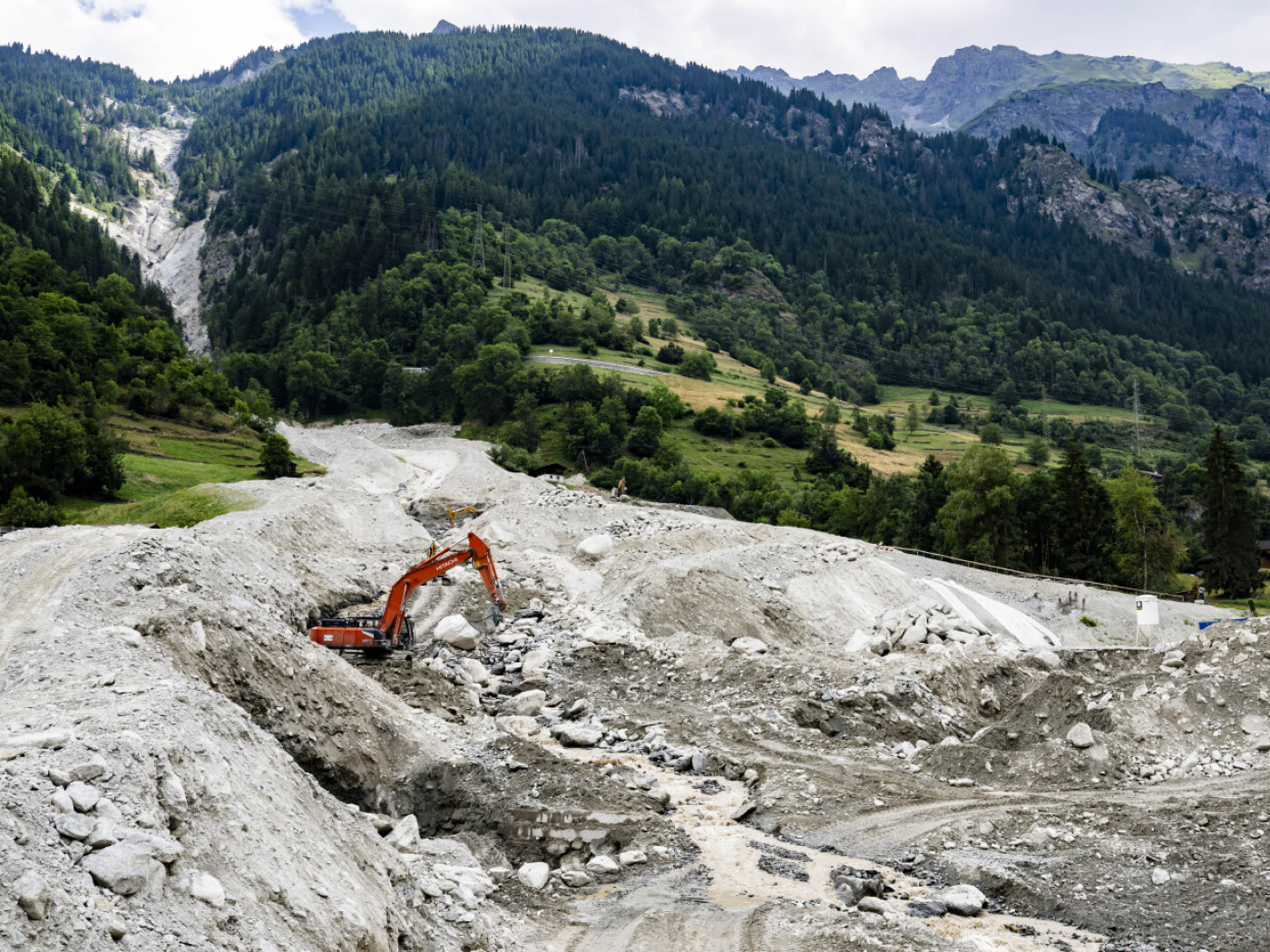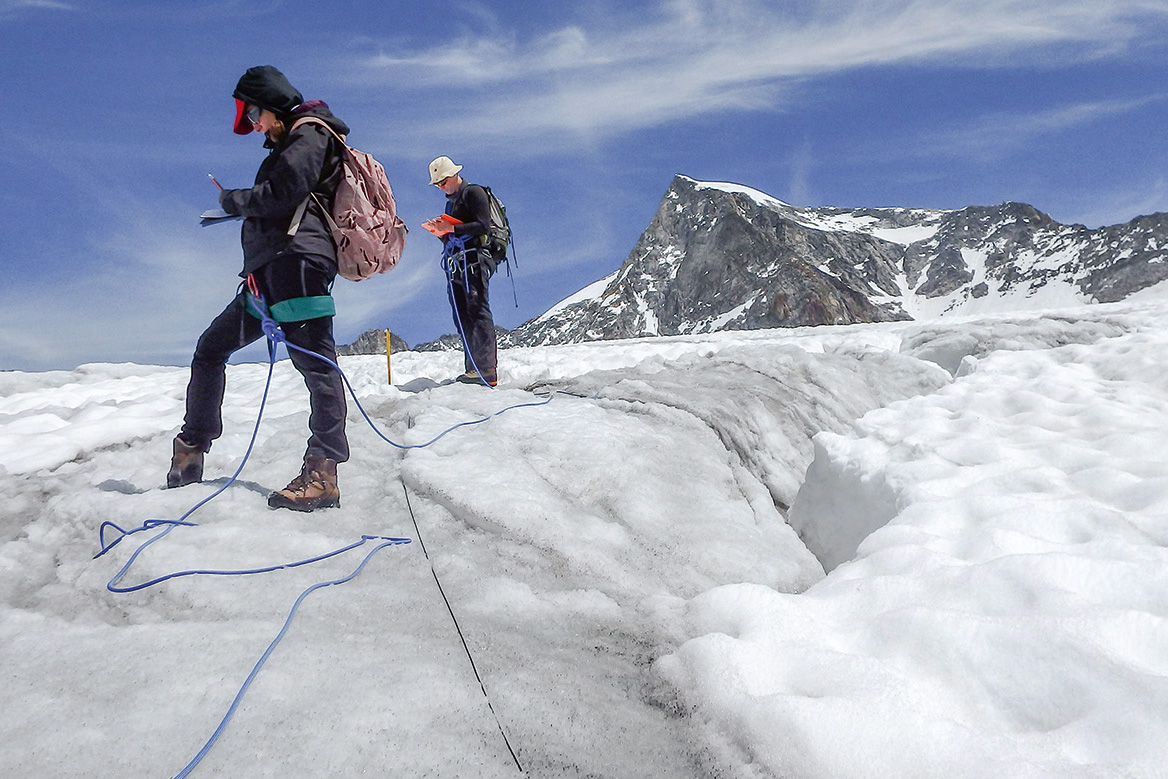
Swiss research explains dynamics of destructive debris flows

A research team from the federal technology institute ETH Zurich studied debris flows in canton Valais with unprecedented precision to better understand the factors that determine how destructive they are.
The international team led by ETH Zurich studied first-hand the triggering of a torrential debris flow in June 2022 in the Illgraben cirque above the Valais municipality of Leuk.
+Get the most important news from Switzerland in your inbox
No less than 25,000 cubic metres of material – water, earth and scree – poured down four kilometres into the Illbach riverbed before flowing into the Rhône, ETH Zurich wrote in a press statement on Wednesday.
Scientists monitored the natural phenomenon at several measuring stations, using high-precision 3D laser scanners known as LiDARs. At the top of the valley, a rapidly advancing two-metre-high front was observed at the tip of the flow, containing large boulders up to a cubic metre in size.
Further down the valley, the debris flow was slower, but powerful, fast-moving waves occurred regularly at its surface. Scientists counted 70 such waves during the half-hour flow.

More
Fibre optics on glaciers open new frontiers for natural disaster predictions
Central role of surges
These surges play a central role in the destructive force of debris flows, as they make the flow of material particularly powerful and fast. According to the authors, little was known until now about the physical processes behind these thrusts.
“We were able to demonstrate that surges arise spontaneously on the surface of the flow. They stem from small irregularities, which grow over time, increasing in size and speed until they reach their maximum destructive force.” ETH Zurich professor Jordan Aaron said in a press releaseExternal link.
On the basis of this study, it will be possible in future to estimate whether surges can be expected during a debris flow and how destructive they would be. According to Aaron, this would make it possible to improve hazard management in the medium term.
The scientists were also able to deduce that large boulders have a big influence on local flow dynamics. This phenomenon is not taken into account in most current forecasts.
Researchers from the Swiss Federal Institute for Forest, Snow and Landscape Research (WSL) and the University of Manchester also took part in the study, which was published in the Communications Earth & Environment journal.
Translated from French by DeepL/dos
We select the most relevant news for an international audience and use automatic translation tools to translate them into English. A journalist then reviews the translation for clarity and accuracy before publication.
Providing you with automatically translated news gives us the time to write more in-depth articles. The news stories we select have been written and carefully fact-checked by an external editorial team from news agencies such as Bloomberg or Keystone.
If you have any questions about how we work, write to us at english@swissinfo.ch

In compliance with the JTI standards
More: SWI swissinfo.ch certified by the Journalism Trust Initiative















![The four-metre-long painting "Sonntag der Bergbauern" [Sunday of the Mountain Farmers, 1923-24/26] had to be removed by a crane from the German Chancellery in Berlin for the exhibition in Bern.](https://www.swissinfo.ch/content/wp-content/uploads/sites/13/2025/12/01_Pressebild_KirchnerxKirchner.jpg?ver=f05a5a9c)














You can find an overview of ongoing debates with our journalists here . Please join us!
If you want to start a conversation about a topic raised in this article or want to report factual errors, email us at english@swissinfo.ch.